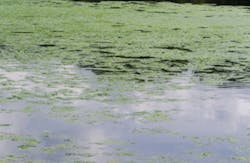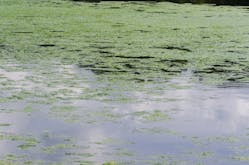The Water Research Foundation (WRF) has released findings of a study addressing effective removal methods for cyanobacteria and other toxic algae from drinking water.
The prevalence of drinking water source contamination by cyanobacterial blooms continues to increase, aided by changing climate, continued urbanization and increased nutrient loading of source waters. This latest project by WRF, Optimizing Conventional Treatment for Removal of Cyanobacteria and Toxins (#4315), provides guidance to water utilities on the optimization of conventional treatment for the removal of cyanobacteria and metabolites while meeting other water quality goals.
The release of this report comes on the heels of a February 12 vote by the U.S. House of Representatives Energy and Commerce Committee advancing a bill that would direct EPA to develop a plan to assess and manage risks associated with cyanotoxins in public drinking water systems. “Anticipating needs that may arise as utilities are faced with more questions around this issue, Project #4315 supplies water quality managers and water treatment plant operators with knowledge and tools required to confidently apply conventional water treatment processes in the event of source water contamination with cyanobacteria,” according to a WRF press release.
READ ALSO: States Develop New Strategies to Reduce Nutrient Levels in Mississippi River, Gulf of Mexico
The experimental work undertaken by the Australian Water Quality Centre, a business unit of the South Australian Water Corporation (SA Water), and the Metropolitan Water District of Southern California (MWDSC), helped identify key best practices when addressing cyanotoxin cases. These best practices include:
- Understanding at what point chlorination does/does not have beneficial effects on coagulation
- What oxidant alternatives can be used in the treatment process
- The effectiveness of specific coagulants on cell and natural organic material removal
- What role turbidity can play in the treatment process
- The removal rate of specific toxin strains, such as C. raciborskii
“This important research will help utilities better manage contamination issues from toxic algal blooms and ensure that their communities continue to receive safe drinking water,” said Rob Renner, Executive Director of WRF.
In addition to project #4315, WRF is partnering with the American Water Works Association to develop two cyanotoxin utility action guides to be released later this year. The guides will be designed for use by water utility management and staff to help water systems recognize if cyanotoxins may be an issue for their utility and what initial steps they should take to address the matter.



